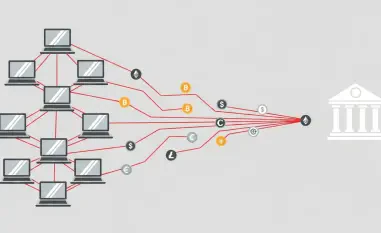In recent years, the use of surveillance technologies has become increasingly sophisticated, with companies finding innovative ways to bypass traditional security protocols. These developments pose significant concerns regarding user privacy, particularly in the realm of telecommunications. The SS7 protocol, which is integral to network communication, is now being exploited by surveillance firms that manipulate its foundational systems to track users’ locations. This raises the alarm on how these firms maneuver through telecommunication networks to extract location data by altering TCAP messages. This scenario calls attention to existing vulnerabilities and compels both telecom operators and cybersecurity experts to reassess their defense strategies against such breaches.
Understanding SS7 Protocol Exploitation
Decoding SS7 and TCAP Mechanics
The Signaling System 7 (SS7) protocol is a crucial element in enabling telecommunication exchanges between networks globally. Originally designed to support simple network signaling functions, SS7 has evolved to facilitate more complex tasks, including subscriber location tracking through TCAP messages. Attackers exploit the protocol by modifying TCAP command structures, particularly the PSI Invoke elements. These elements form the backbone of location tracking requests via GSM-MAP commands, which are normally structured in a secure format. Surveillance entities alter these structures, distorting Information Elements encoding processes like the International Mobile Subscriber Identity (IMSI) field, using extended Tags that evade typical security measures. This circumvention of standard encoding not only exposes subscriber information but also undermines the very signaling mechanism supposed to safeguard user data.
The Role of IMSI in Exploitation
Specific to these attacks is the manipulation of the IMSI field, a unique identifier essential for mobile subscriber recognition. Typically, the IMSI operates in signaling exchanges to authenticate and ensure the secure transfer of user location data. However, by employing unconventional Tags, surveillance technologies manage to circumvent traditional check mechanisms, particularly exploiting outdated software stacks within telecom infrastructures. Enea, a notable cybersecurity firm, highlighted this issue, urging telecom operators to upgrade legacy systems that lack the logic to decode these modified Tags. This vulnerability reveals a stark reality: attack success is influenced more by vendor-specific software deficiencies than inherent protocol weaknesses. This prompts a reassessment of how telecommunication networks handle security in their signaling practices, necessitating immediate upgrades for robust defense mechanisms.
Addressing Emerging Security Threats
Enea’s Recommendations and Prevention Strategies
The emerging threat of SS7 protocol exploitation underscores the urgent need for telecom operators to adapt their security frameworks to ward off unconventional data retrieval requests. Enea’s recommendations focus on fortifying defenses against malformed command structures, especially those that omit expected IMSI data in signaling exchanges. The firm emphasizes blocking these suspect communications, which can reduce the susceptibility of networks to unauthorized tracking activities. By enhancing the capacity to discern and block potential breaches, telecom operators can safeguard user privacy effectively, ensuring the integrity of location data transactions. Remaining vigilant and proactive in addressing protocol manipulation forms the core of preventing further exploitations.
Upgrading Legacy Systems for Security
One major challenge in combating SS7 exploitation arises from the prevalence of legacy systems within numerous telecom infrastructures. These older systems often operate on outdated software stacks, making them vulnerable to sophisticated forms of manipulation. Enea suggests that telecom operators must prioritize upgrading these infrastructures with contemporary software solutions capable of decoding and responding to modern surveillance tactics. This upgrading process not only strengthens the operational resilience of telecommunication networks but also equips them to handle evolving security threats proficiently. As surveillance technologies continue to adapt, maintaining updated security practices becomes a mandatory defense strategy, ensuring subscriber safety amidst rising threats.
Safeguarding Telecommunications for the Future
Adapting to Evolving Surveillance Techniques
The battle against surveillance firms exploiting SS7 protocol protections exemplifies the constant evolution of threats in telecommunications. The adaptability of such firms highlights the necessity for continuous advancements in security measures among network operators. Ensuring the robust protection of subscriber information involves not only upgrading technical defenses but also fostering a culture of vigilance and innovation across the telecommunications sector. Operators must embrace a proactive stance, anticipating future surveillance advancements and responding swiftly to address any arising vulnerabilities.
Collaborative Efforts for Enhanced Security
Collaborative efforts are needed to enhance security measures, including partnerships between telecom operators, cybersecurity firms, and regulatory entities. Joint endeavors aimed at sharing knowledge, developing advanced threat detection systems, and establishing standardized security protocols can fortify defenses against emerging surveillance tactics. By working together, stakeholders can create a more secure telecommunication infrastructure that prioritizes user privacy and successfully counters exploitation by increasingly sophisticated surveillance technologies.













